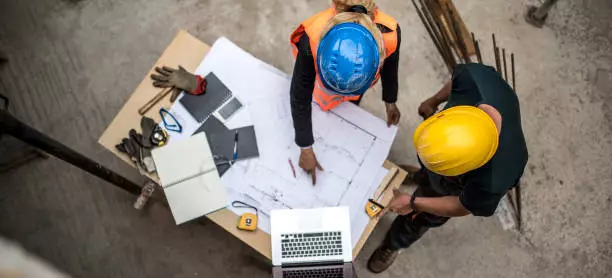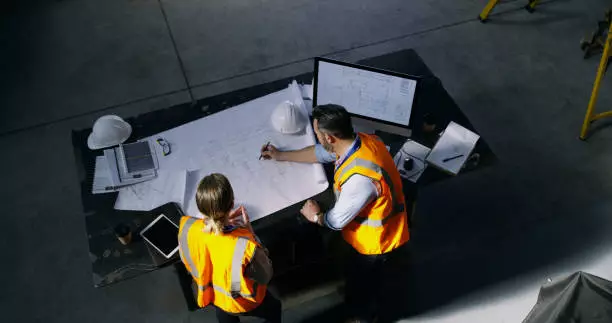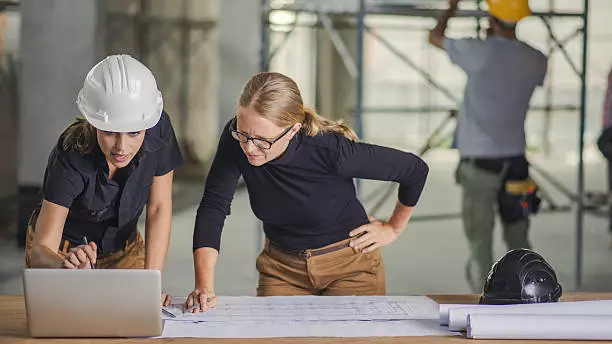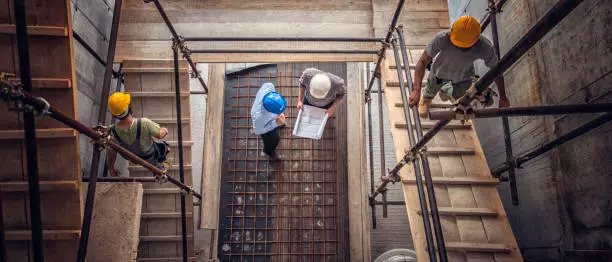Role Of Architecture In Construction
In this article, we will be discussing the role of architects and architecture in construction. Architects are in charge of design and project planning, as well as the aesthetic appearance of structures and buildings. Individuals who are registered with a local governing body are referred to as “architects.”
Architects must complete specific professional training requirements and pass an exam to become licensed. Individuals without licenses can provide architectural services, but they cannot call themselves architects or sign construction documents.
To produce qualified designs, architects collaborate with other professionals such as HVAC and civil engineers. Architects are responsible for a variety of tasks at all stages of a project, from the first drafts and meetings to the building’s inauguration.
Roles Of An Architect In A Construction Project
Architects are hired by the client and are responsible for gathering all the information and ideas needed to design a functional space that meets the client’s needs while adhering to building codes. When a client contacts an architect, a meeting is scheduled to discuss the project’s requirements and needs.
It may take several meetings before both parties are satisfied with the conceptual design. A single person cannot, however, design an entire building; architects collaborate with civil and structural engineers to discuss technical issues and the building’s structural integrity.
Architects are involved in more than just the design phase of a building. Their contributions are critical at every stage of a project, and this article outlines their responsibilities. Architects can also contribute to greater energy efficiency by designing buildings that maximize natural lighting and ventilation while reducing heating and cooling requirements.
1. Project discussion
A client hires an architect to create a detailed design of a concept or idea that the client wishes to realize. Before the design is approved, meetings and discussions with various team members and engineering professionals take place. This aids in recognizing the various technical challenges that will be encountered in the future. Client requirements, expected budget, site characteristics, safety, and local planning regulations are some of the topics that must be discussed during those meetings. The following works are included in the project discussion led by the architect:
- Obtaining a thorough understanding of the client’s needs through a detailed discussion.
- Discussion of the anticipated budget, site characteristics, and other applicable planning regulations.
- Recognize the site’s advantages and disadvantages.
- Bringing the feasibility study and presenting it
2. Drawing Preparation
A construction project necessitates the preparation of massive design drawings prior to the design execution on site. Initially, sketch designs are created to show the location of the building and to give an idea of the layout of various spaces within the site.
Architects are in charge of producing detailed drawings and determining the project’s viability. Traditionally, this was done by hand, but modern BIM and CAD software have significantly sped up the process. Floor plans, site plans, elevations, structural drawings, 3D models, and 3D views are among the various drawings that an architect can create.
Multiple revisions and drawings are made during this stage to incorporate changes based on client needs, budget, and regulations. The final blueprints, which include plans for all structural, mechanical, and electrical systems, direct builders in constructing the desired structure.
Design instructions and technical specifications for contractors are two other technical documents that must be created in conjunction with the plans. Following the final design, the contract proposal is created, which allows for the creation of cost estimates and a project timeline.
3. Cost Estimation
Cost estimation at various stages of the project allows for better budget control. Architects envision the entire structure of a building, bringing innovative designs and ideas to the construction industry, but they also require structural engineering and MEP installations.
Architects and engineers must be careful not to underestimate material costs or construction time, as this can lead to inaccurate cost estimates. The information architects present in their cost estimates vary depending on their scope of work: they may be in charge of presenting a complete construction estimate or just a portion, such as landscaping.
4. Contracts
Architects can assist with contract negotiations and may recommend and select contractors for various activities. Following the receipt of all tenders, the architect prepares analysis reports, which are then compared to the client’s expectations and budget. Once construction begins, the architect will conduct site visits and meetings, as well as contract negotiations and dealing with and resolving any issues that arise. Some documentation created during the construction phase will require the signature and approval of an architect.
5. Supervision
Given that architects lay the foundation for a building, it is reasonable to expect them to serve in a general supervisory capacity from the start to the finish. It gives them great pleasure to see their designs come to life through construction. As a result, they make the realization possible by overseeing the entire construction process from beginning to end.
6. Building construction
Architects are creative in their manner, they are in charge of ensuring that the building is not only technically sound but also visually pleasing. Some structures are cleverly designed to resemble the shapes of diverse items.
Architects who are both talented and inventive are the only ones who can build such incredible structures. As a result, when it comes to a building’s aesthetics, an architect plays a crucial role.
7. Maintenance
The architect is expected to provide an owner’s manual with maintenance and repair recommendations in the future. It is not a common practice, although some architects do provide this service. If any concerns emerge in the future, the architect must be notified, and it is the architect’s responsibility to be available when required.
The architectural engineer’s tasks are comparable to those of the structural engineer. The distinction is that architects focus more on the building’s appearance and aesthetics, whereas structural engineers concentrate on the structure’s construction type and endurance.
Conclusion
The role of architecture in construction cannot be overstated. They usually lay the groundwork for any construction project by sketching and designing it. They are professional creatives tasked with giving aesthetics and structure to a building on paper that will be brought to life through construction.





